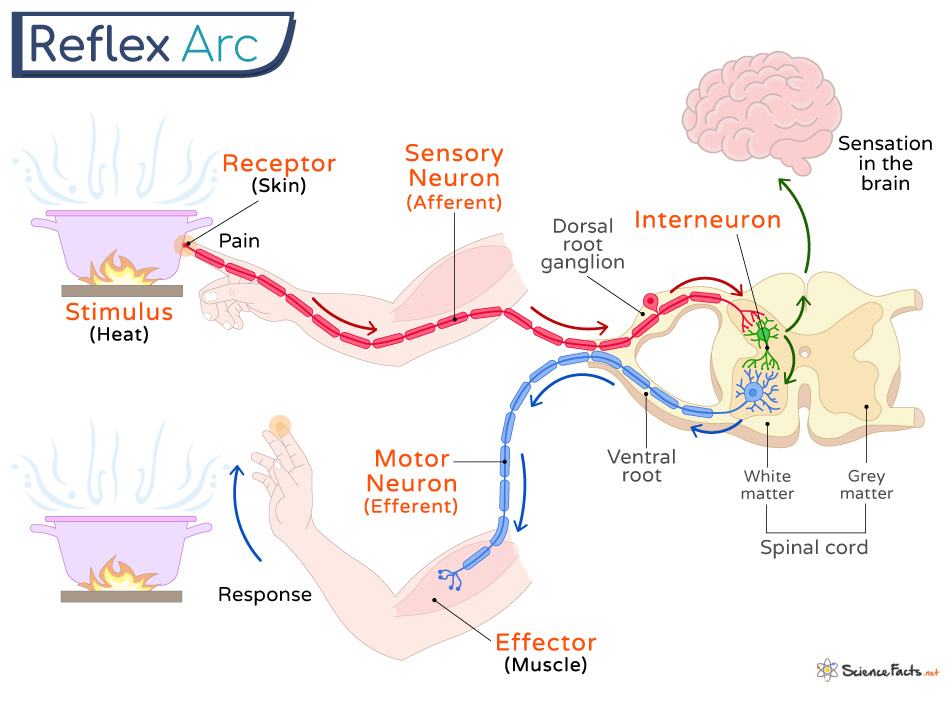
Reflex Arc Definition, Steps, Components, and Diagram
By definition, a reflex is an involuntary, stereotypical response of the effector tissue from the stimulation of receptors. These reflexes are executed by the successive activation of a certain number of neurons that are mutually connected.
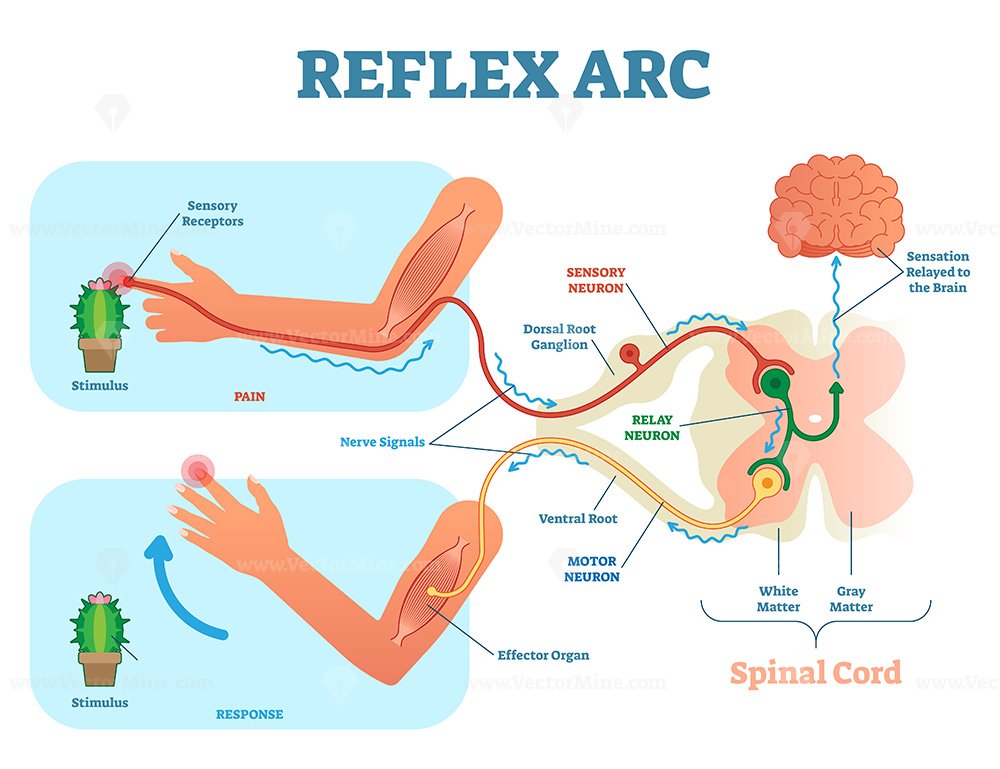
Spinal Reflex Arc anatomical scheme, vector illustration VectorMine
A reflex "arC" is not a series of actions but the structure that allows a reflex "acT" to happen, and it comprises (in a sequential order) a stimulus, a receptor, an afferent pathway, a synapse, an efferent pathway, an effector and a response. The reflex "acT" is an involuntary response to a stimulus, where the components I just mentioned interact.
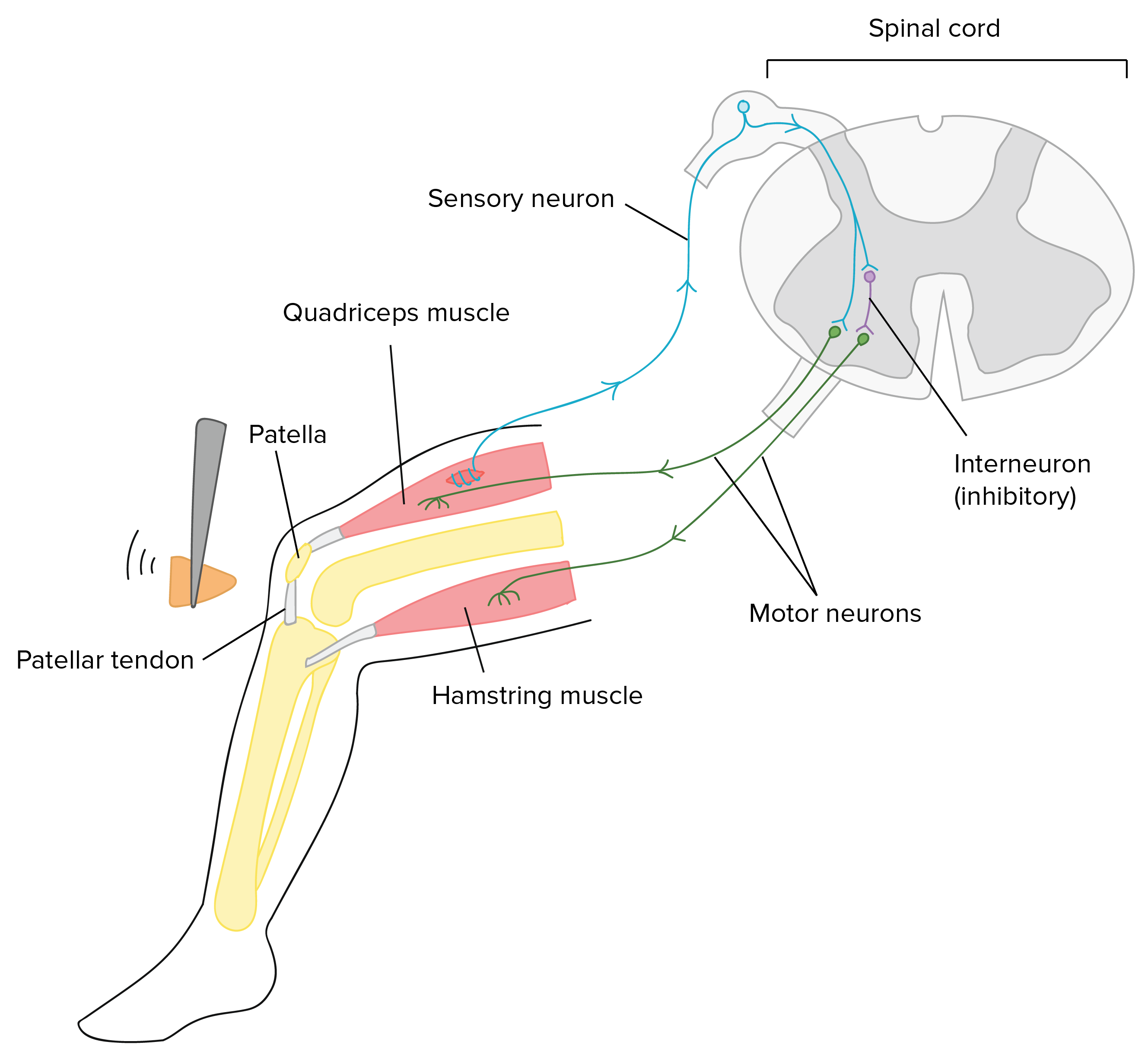
😍 Explain a reflex arc. How Does Reflex Arc Work?. 20190129
Labelled Diagram Of A Reflex arc Reflex Arc Diagram This labelled diagram of a reflex arc indicates the neural pathway controlling a reflex. It clearly indicates the route adapted when a stimulus occurs and how the reaction takes place.

Reflex Arc Key Stage Wiki
Draw a labelled diagram of reflex arc and explain reflex action. Solution Verified by Toppr The reflex arc describes the pathway in which the nerve impulse is carried and the response is generated and shown by the effector organ. The reflex arc typically consists of five components: 1. The receptor is present in the receptor organ. 2.

Reflex Arc Diagram Quizlet
The reflex arc is the pathway that a signal follows from stimulus to response during a reflex action. The typical reflex arc of a simple reflex has seven components, which are shown in Figure 2. Figure 2 : A flow chart showing the 7 components of a reflex arc, from the stimulus to the response.
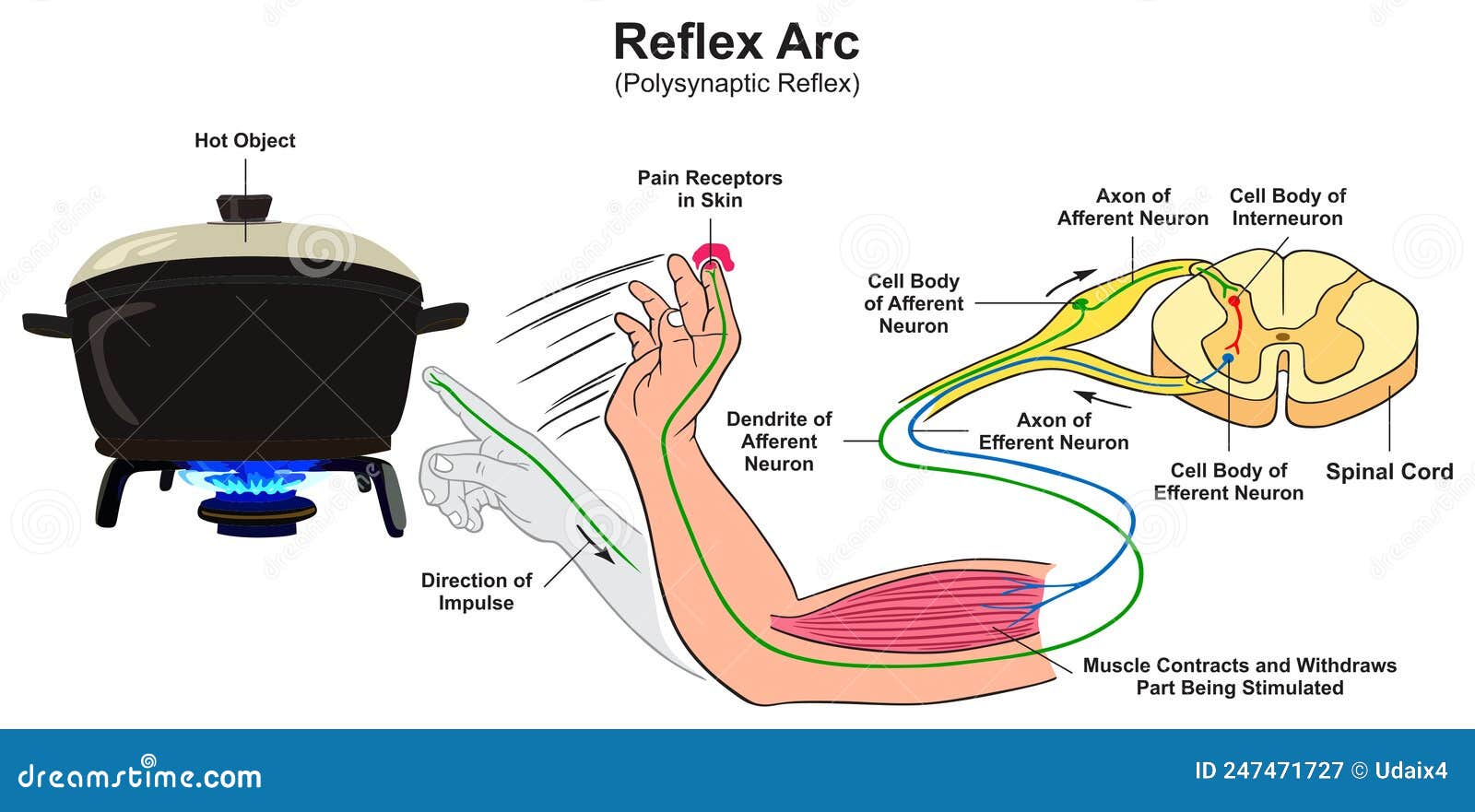
Reflex Arc Polysynaptic Infographic Diagram Stock Vector Illustration of infographic, body
How does the human body work? - Class 11 Course: How does the human body work? - Class 11 > Unit 6 Lesson 3: Human nervous system Brain: Parts & functions (Fore, mid & hind) Overview of the functions of the cerebral cortex Thalamus, hypothalamus, and limbic system Reflex action (& reflex arc) Functions of brain Forebrain and reflex action Science >
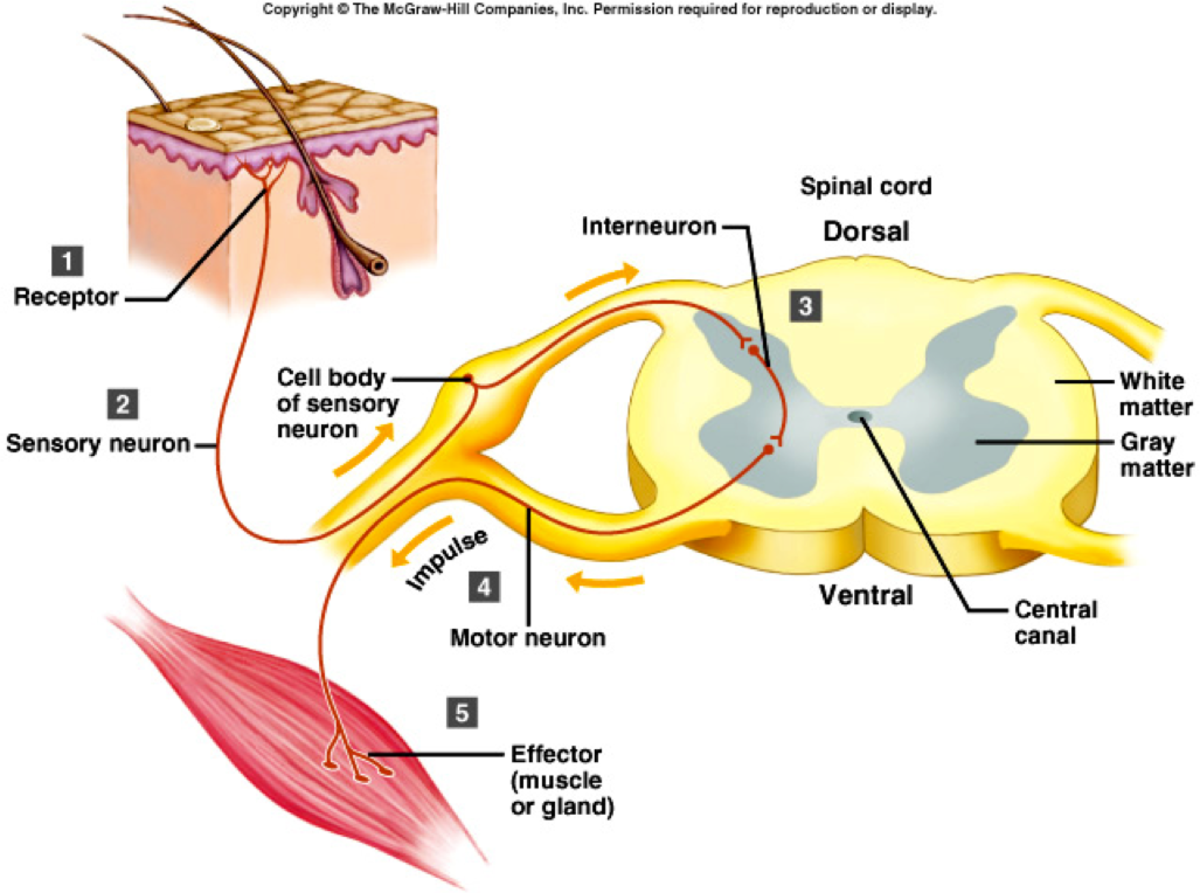
All About The Spinal Cord and Its Importance HubPages
fig 1 - Diagram demonstrating the components of a reflex arc and the reflex response to a heat source. The Monosynaptic Stretch Reflex A monosynaptic reflex, such as the knee jerk reflex, is a simple reflex involving only one synapse between the sensory and motor neurone.

Schematic representation of a spinal reflex arc. A pin in the skin... Download Scientific Diagram
There are three main types of neurone in a reflex arc: sensory, relay and motor Sensory neurones carry impulses from sense organs to the CNS (brain or spinal cord) Relay neurones are found inside the CNS and connect sensory and motor neurones Motor neurones carry impulses fr om the CNS to effectors (muscles or glands)
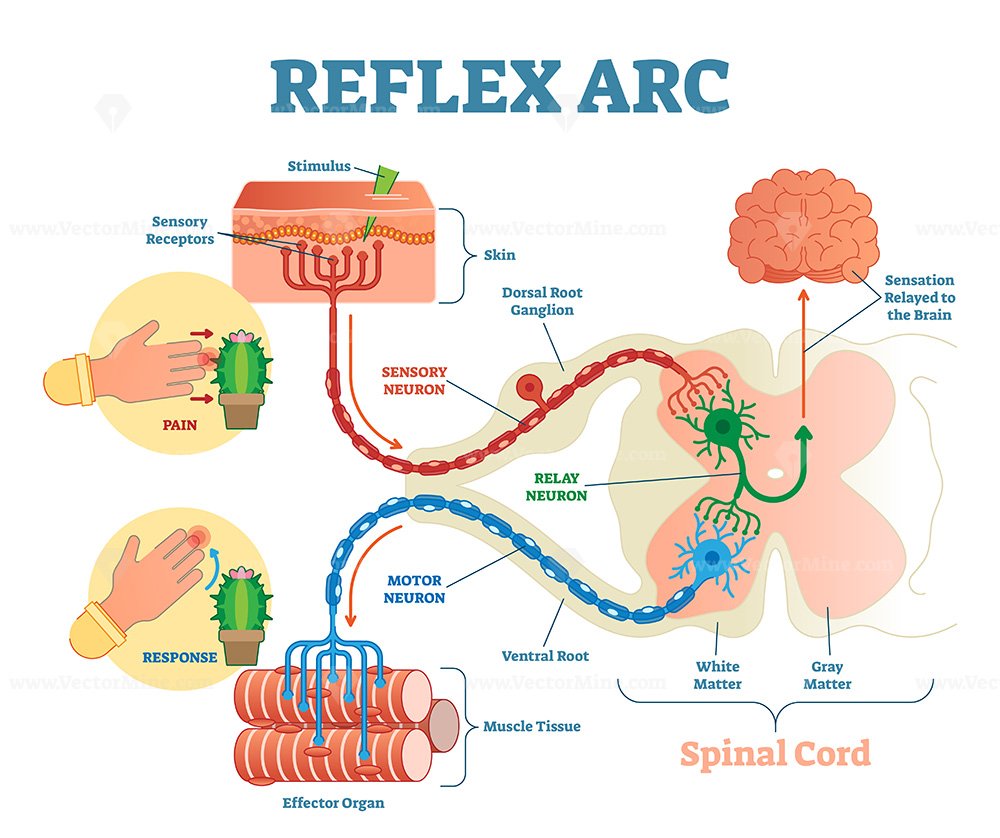
Spinal Reflex Arc anatomical scheme, vector illustration VectorMine
A reflex arc is a neural pathway that controls a reflex. In vertebrates, most sensory neurons do not pass directly into the brain, but synapse in the spinal cord. This allows for faster reflex actions to occur by activating spinal motor neurons without the delay of routing signals through the brain.

Think Tank Centre The Reflex Arc
The primary components of the reflex arc are the sensory neurons (or receptors) that receive stimulation and in turn connect to other nerve cells that activate muscle cells (or effectors), which perform the reflex action.

How to Draw Reflex Arc Reflex Arc Diagram Structure of Reflex Arc in Very Simple Way YouTube
A reflex action is an automatic (involuntary) and rapid response to a stimulus, which minimises any damage to the body from potentially harmful conditions, such as touching something hot..

Reflex arc Medical school inspiration, Medical student study, Medical school studying
Key Points. Reflexes, or reflex actions, are involuntary, almost instantaneous movements in response to a specific stimulus. Reflex arcs that contain only two neurons, a sensory and a motor neuron, are considered monosynaptic. Examples of monosynaptic reflex arcs in humans include the patellar reflex and the Achilles reflex.

2. The mammalian stretch reflex arc. Download Scientific Diagram
A reflex arc refers to the neural pathway that a nerve impulse follows. The reflex arc typically consists of five components: A receptor, and independent sensory cell, or an ending of a sensory neuron, reacts to a stimulus (e.g., a stretch receptor).. Circuit diagram for recording electromyograms from the calf muscles. Make sure the ankle.

20182019 Marieb Reflex Arc Diagram Quizlet
Reflex action is an involuntary response to a stimulus that is manifested at the level of the spinal cord. The pathway followed by a nerve impulse during this action is called the reflex arc. The components of a reflex arc are; A receptor to detect the stimulus. A sensory neuron to carry the information towards the spinal cord.
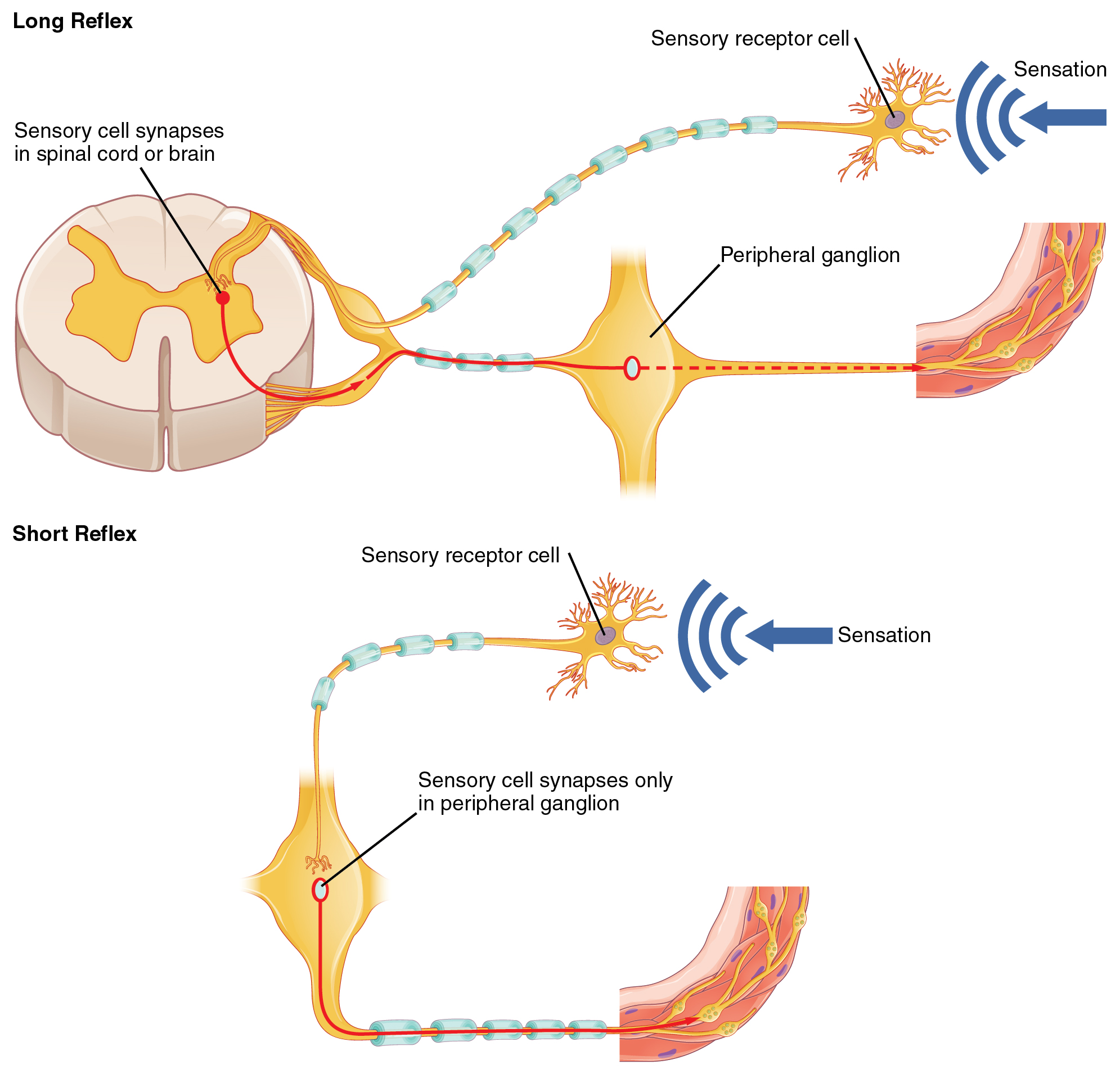
The top panel in this figure shows a long reflex, where the spinal cord is connected to the
reflex arc . For example, a simple reflex arc happens if we accidentally touch something hot. Receptor in the skin detects a stimulus (the change in temperature). Sensory neurone sends.
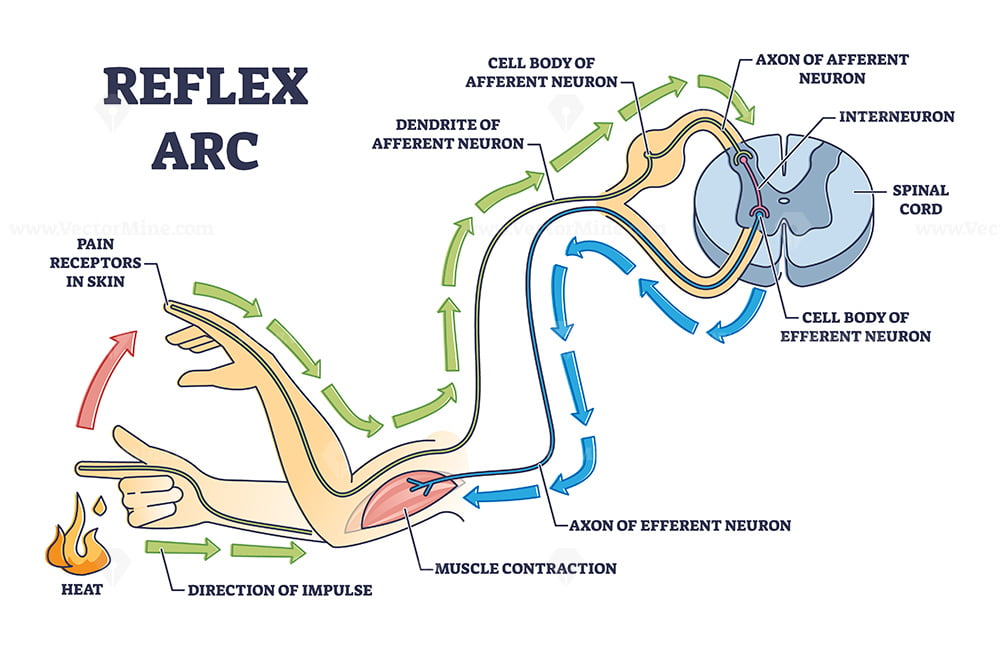
Reflex arc explanation with pain signals and receptor impulse outline diagram VectorMine
Below is a diagram of a reflex arc: a. Label each cell as an interneuron, motor neuron or sensory neuron. b. Using arrows, indicate the direction of nerve impulse through each neuron. c. Label the receptor end of the sensory neuron, the dendrite and axon. d. Label the effector (muscle/organ) of the motor neuron, the dendrite and the axon.